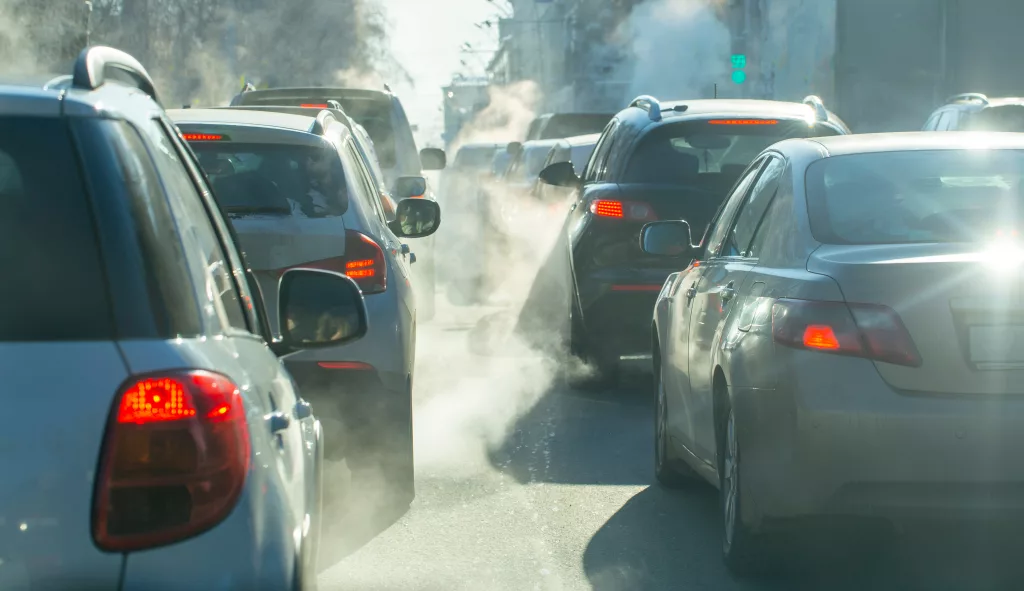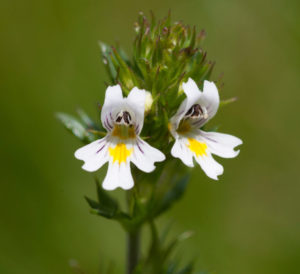Last updated on December 6th, 2023 at 01:59 pm

Spring, that time of year again when everything is blooming and coming alive including your allergies. While things like pollen and dust can trigger your allergies, another common culprit you may not realize is air pollution.
What causes air pollution?
Many things like exhaust fumes from cars, airplanes, and commercial vehicles can cause air pollution. These can be major triggers for allergies — especially if you live in an urban area. In addition, industrial chemicals from factories, commercial fertilizers and pesticides, wildfires, and increased exposure to ozone as global warming worsens can all exacerbate allergy symptoms.
What’s more, the air inside your home can be more polluted than outdoors. Household cleaners, air fresheners, and fragrances from laundry detergent and perfumes can turn your home into a breeding ground for air pollution. Even paint, new carpet, and upholstered furniture can contribute to poor air quality. That’s because your home is an enclosed structure trapping in toxins and allowing them to accumulate.
How does air pollution affect allergies?
Exposure to different substances can trigger allergies, even if they may not necessarily cause them. Such is the case with air pollution. As a result, impurities in the air can cause red and watery eyes, itchy ears, a runny nose, sneezing and head congestion.
Managing air pollution
Air pollution won’t go away, but you can still reduce your exposure to chemicals and airborne irritants that may worsen your allergies. Here are a few tips:
Indoor pollution:
- Keep your house as clean as possible. Clear clutter. Sweep, dust, mop, and vacuum to reduce dust and pet dander. Change bed linens twice a month or more. Once a month, strip your pillows and toss them in the dryer to kill dust mites. Use protective mattress and pillow covers designed to reduce dust mites and other allergy triggers from burrowing into them. Dust your blinds and clean your curtains.
- Indoor plants can be helpful, as various plants remove certain air pollutants like benzene and formaldehyde. However, plants can also create mold and mildew, so be mindful if these substances trigger your allergies.
- Change your air filters regularly. Consider investing in a high-quality air purifier to also help.
- When the local air quality is high and you don’t mind the outside temperature, try opening the windows for a bit to air out your house.
Outside pollution:
- Carpool, walk, bike, or take public transportation whenever possible to reduce environmental pollution. Try combining several errands to avoid making extra and unnecessary trips.
Other options for allergies
The strategies above can help, but there are also treatments that can give you additional relief. Try a neti-pot solution to drain excess mucus. Also, conventional over-the-counter antihistamines can help dry up mucus while calming or preventing allergy flare-ups. Decongestants can help clear congestion; but you should be careful to avoid them if you have high blood pressure — especially if it is not controlled. Both antihistamines and decongestants can interfere with sleep; antihistamines may cause drowsiness which is why it\’s not recommended to take them during the day while decongestants can make you feel jittery.
Boiron AllergyCalm is another option to keep allergies at bay. Not only does it use pure active ingredients, but it controls your symptoms without making you drowsy. It’s formulated to tackle itchy, watery eyes, sneezing, runny nose, and itchy throat and nose.* It’s available in meltaway tablets and travel-friendly pellets for adults, well as a formula for kids ages 2 and up.
*Claims based on traditional homeopathic practice, not accepted medical evidence. Not FDA evaluated.






